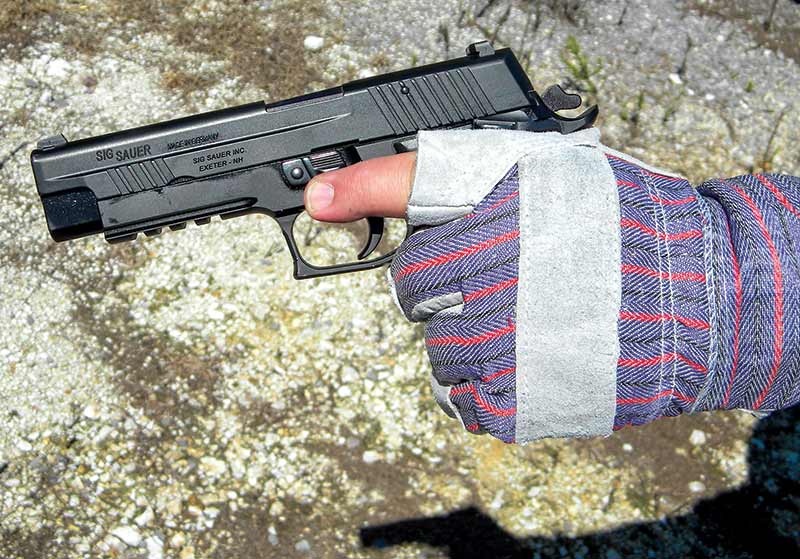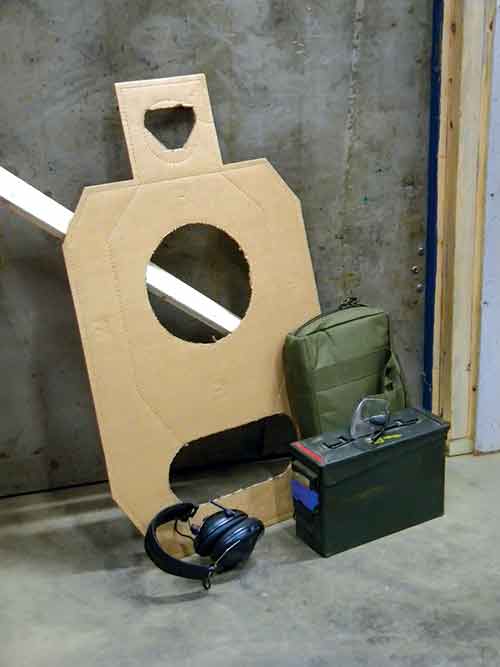How to Practice Defensive Shooting… with Purpose
Defensive training introduces the mental and physical skills required to use a firearm effectively against a threat. The goal is developing the ability to apply these skills on demand, under adverse conditions, against someone intent on inflicting harm. The only path to this level of skill and confidence is practice — disciplined repetition.
Shooting is fun, too much fun. We go to the range to practice, but it’s easy to get sidetracked, losing focus of our original intent. Blasting away. “How quick can I empty the magazine?” Or perhaps slowly firing one shot after another, seeking tighter groups. This shooting isn’t preparing you to defend against a sudden, violent attack.
A defensive response includes these fundamentals: Move, Communicate, Use Cover, Shoot (if necessary) and Think (problem solving.) Defensive practice should reflect these tactics. It also must include presentation of the pistol from concealment, manipulations — especially single hand drills and clearing malfunctions.
Best Practice? Not Shooting!
The majority of defensive practice can and should be practiced “dry.” Thousands of proper repetitions are required to learn a sequence where you’re mentally performing at a subconscious level. Dummy weapons like plastic “Red” or “Blue” guns, inert training rounds and devices like DryFireMag’s “Reset” magazines are mandatory for banking the required repetitions. After your initial investment for gear, dry practice is easy and cheap. The experts, knowing way more than we’ll ever understand, agreed 90% of practice should be done without firing a shot. Take their advice. Everyone can devote 15 minutes a day for dry practice.
Practice is performed slowly, methodically working through the various steps of a sequence. Speed is your worst enemy. If you’re making mistakes, slow down. Efficiency, not speed, is the goal. Slow, deliberate, mistake-free practice with no wasted motion makes you efficient. Speed or quickness develops with time and repetition.
Training, practice and fighting are performed at a speed that’s mistake free.
“Verbalization” is an excellent technique to slow your brain down. The mind cycles through sequences quicker than we can physically perform. Verbalization, saying each step out loud as it’s performed, slows down conscious thought and helps implant the proper steps.
Range Test
Dry practice is your “homework.” Range trips are “tests” to confirm the dry repetitions are paying off. Preparing includes deciding what you’re going to practice. Make a list of drills you’ll practice, number of repetitions and the number of shots fired. This ensures your range trip is productive.
Concentrate on good hits as opposed to speed. Negative targets — you shoot through the holes — help keep you from getting caught up in group size. On the range, you discover areas where you need additional practice. Don’t deviate from your live-fire list. Make note of what needs work and this goes on your dry-practice list.
The only reason to use a timer is for comparisons. Which is more efficient, technique A or B? Don’t get caught up in trying to beat the clock. The timer’s “beep” makes everyone go too “fast.” Mistakes occur, you go faster to catch up, and it’s downhill from there. This is no different from letting the threat dictate the pace of the fight, which is a sure path to defeat.
Keep in mind, winning the fight isn’t based on how quick you can draw or shoot. Deciding to draw or fire in a timely fashion and acting with resolve is where speed is mandatory. You believe the knife-wielding threat is going to stab you. If you wait for 100% proof of this (knife going in and blood coming out) it won’t matter how fast you are, it’s too late. The fight is won by decision making, cycling through the Boyd’s O.O.D.A. (Observe, Orient, Decide, Act) Loop. The goal is to force the threat to react to you.
Proper practice also creates confidence. There’s a direct correlation between your self-image, what you think of your abilities, and your performance. Yes, there are always skills to improve or polish. When practice is over, you should feel good about your progress.
Look up “repetition,” and you’ll discover “mundane” and “boring.” Eventually, practice, both dry and live, should become monotonous. It should become ordinary for drills to go well. With repetition, most of these skills shift from the conscious mind, thinking about each step, to the subconscious mind. The conscious mind thinks, “threat.” You’re moving, issuing verbal commands, and presenting the pistol at a subconscious level. This frees up the conscious mind to focus on problem solving.
Practice, and all that it involves, is mandatory for the fight, which we’ll do everything to avoid.
For more info: DryFireMag.com

Get More Personal Defense Tips!
Sign up for the Personal Defense newsletter here:








